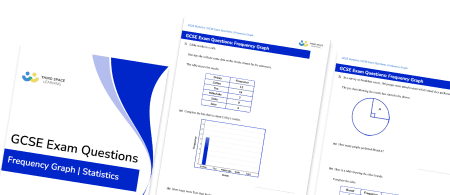FREE DOWNLOAD
Line Graphs Worksheet

Help your students prepare for their Maths GCSE with this free straight line graphs worksheet of 24 questions and answers
- Section 1 of the straight line graphs worksheet contains 21 skills-based straight line graphs questions, in 3 groups to support differentiation
- Section 2 contains 1 applied straight line graphs questions with a mix of word problems and deeper problem solving questions
- Section 3 contains 2 foundation and higher level GCSE exam style questions on straight line graphs
- Answers and a mark scheme for all straight line graphs questions are provided
- Questions follow variation theory with plenty of opportunities for students to work independently at their own level
- All questions created by fully qualified expert secondary maths teachers
Suitable for GCSE maths revision for AQA, OCR and Edexcel exam boards
Unlock access to download your free resource
You can unsubscribe at any time (each email we send will contain an easy way to unsubscribe). To find out more about how we use your data, see our privacy policy.
Line graphs at a glance
A line graph (or line plot) is used to display related data that changes continuously over a given time period. The x and y values are plotted on the graph and the points are plotted and then joined with straight lines. When introducing line graphs, a good starting point is a line graph to show temperature change over a week in the local area – here, the days of the week would be marked off on the x axis, with temperatures on the y axis.
Students should be able to draw line graphs and also interpret their graphs, describing the change over time or comparing two data sets. A double line graph has two sets of related data plotted – for example, the changes in temperature over a week in summer and in winter. This makes it easier to compare and analyse the data sets. The gradient of a straight line segment joining two points on a line graph tells us about the rate of change in that time period – a steeper gradient represents a larger change.
Unlike pie graphs and pictographs, line graphs are not suitable for displaying discrete data, as joining the points implies that the data is continuous.
Looking forward, students can then progress to additional Statistics worksheets, for example a mean, median, mode and range printable worksheet or frequency table worksheet.
For more teaching and learning support on Statistics our GCSE maths lessons provide step by step support for all GCSE maths concepts.
Do you have GCSE students who need additional support?

There will be students in your class who require individual attention to help them achieve their target GCSE maths grade. In a class of 30, it’s not always easy to provide.
Help your students feel confident with exam-style questions and the strategies they’ll need to answer them correctly with personalised online one to one tutoring from Third Space Learning
Lessons are selected to provide support where each student needs it most, and specially-trained GCSE maths tutors adapt the pitch and pace of each lesson. This ensures a personalised revision programme that raises grades and boosts confidence.








